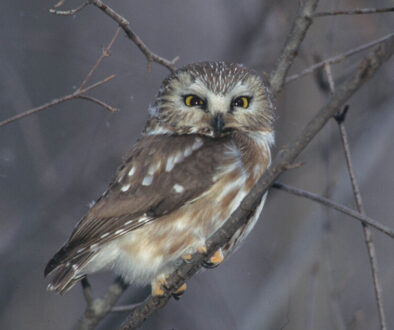Fall Bird Migration

When’s the best time to visit Cape May to see bird migration?” This is the question I get asked most often by visitors who have just learned about how Cape May ranks as one of, if not the top, fall birding hotspots. The answer can only be given tongue-in-cheek: “Easy: just rent a place on The Point starting August 1st and stay through mid-December.” Honestly, it’s not far from the truth.
In fact, what we think of as “fall migration,” the southbound migration of birds that bred during the summer across the boreal and temperate zones, actually starts in July. By August 1st, shorebirds that bred in the Canadian Arctic are cruising down the eastern seaboard, or through the central US, and hitting the Gulf Coast en route to South America. Here in Cape May, Ruby-throated Hummingbird numbers pick up in the first week of August and peak by the third. While some will straggle through in September, most are south of us by Labor Day. As someone who spends a lot of time studying Ruby-throated Hummingbirds, my regular exclamations of “Fall migration is happening!” in early August are met with side-eye glances and disapproval by friends and family alike.
By the time the kids are back in school in early September, though, the real fireworks begin, and the fields and woods of Cape May fill with a myriad of long-distance migrants like warblers, vireos, tanagers, grosbeaks, orioles, and buntings. From mid-September to late October, on the morning after a night of northwest winds following the passage of a cold front, there is no better place to be than Cape May. Specifically, sites like the fields of the Higbee Beach Wildlife Management Area, where birds stream overhead and through the hedgerows in search of food and shelter for the day, much to the delight of birders visiting from as far or farther than many of these birds have traveled, for Cape May is truly a global bucket list destination for the worlds’ nature lovers.


By mid-September the raptor show also turns on in earnest, and folks gather for the annual ritual daily hawk watch at the Cape May Point State Park. There, a designated counter and cadre of naturalists tally the day’s passage of falcons, hawks, and eagles from sunrise to sunset and provide insight to visitors, which can reach more than 1000 people on busy days. Hawk migration peaks in October, but like songbird migration, diversity and numbers vary and change throughout the season so those who spend the most time between mid-September and mid-November may experience the whole range of spectacular sightings. Mid-September also marks the beginning of the Avalon Seawatch, which, by the numbers, represents the biggest spectacle of them all: nearly one million birds tallied each year between September 22 and December 22nd. While each species counted has a different peak across the fall season, visiting the Avalon Seawatch during the last two weeks of October is statistically hedging your bets for some of the biggest flights of the year, which can top 200,000 birds in a single day!
Interestingly, late October is also the best time for a massive influx of short-distant migrant songbirds like sparrows, thrushes, and various winter finches, some of which will spend the entire winter in Cape May, while many of them will continue south only a few hundred more miles to winter. By December the songbird migration has slowed to almost imperceptible levels, and raptor migration is limited to smaller numbers of a few species; even the waterbird migration has become less pronounced so trying to count it becomes too difficult. But don’t let that fool you: migration is still happening, and the result of the months of it that began quietly as we soaked up the sun on the beach in July, and which reached fever pitch in September, October, and November, now leaves the Cape May Peninsula and nearshore waters full of birdlife into December. Just visit the Avalon break wall on a late December day and witness the rafts of sea ducks foraging on the rocky jetties or see the Northern Gannets diving into balls of baitfish just offshore.
Okay, maybe it’s winter by then, but if you see me out there, don’t cringe when you hear me exclaim “Wow! Fall migration is still happening right before our eyes!” ■



